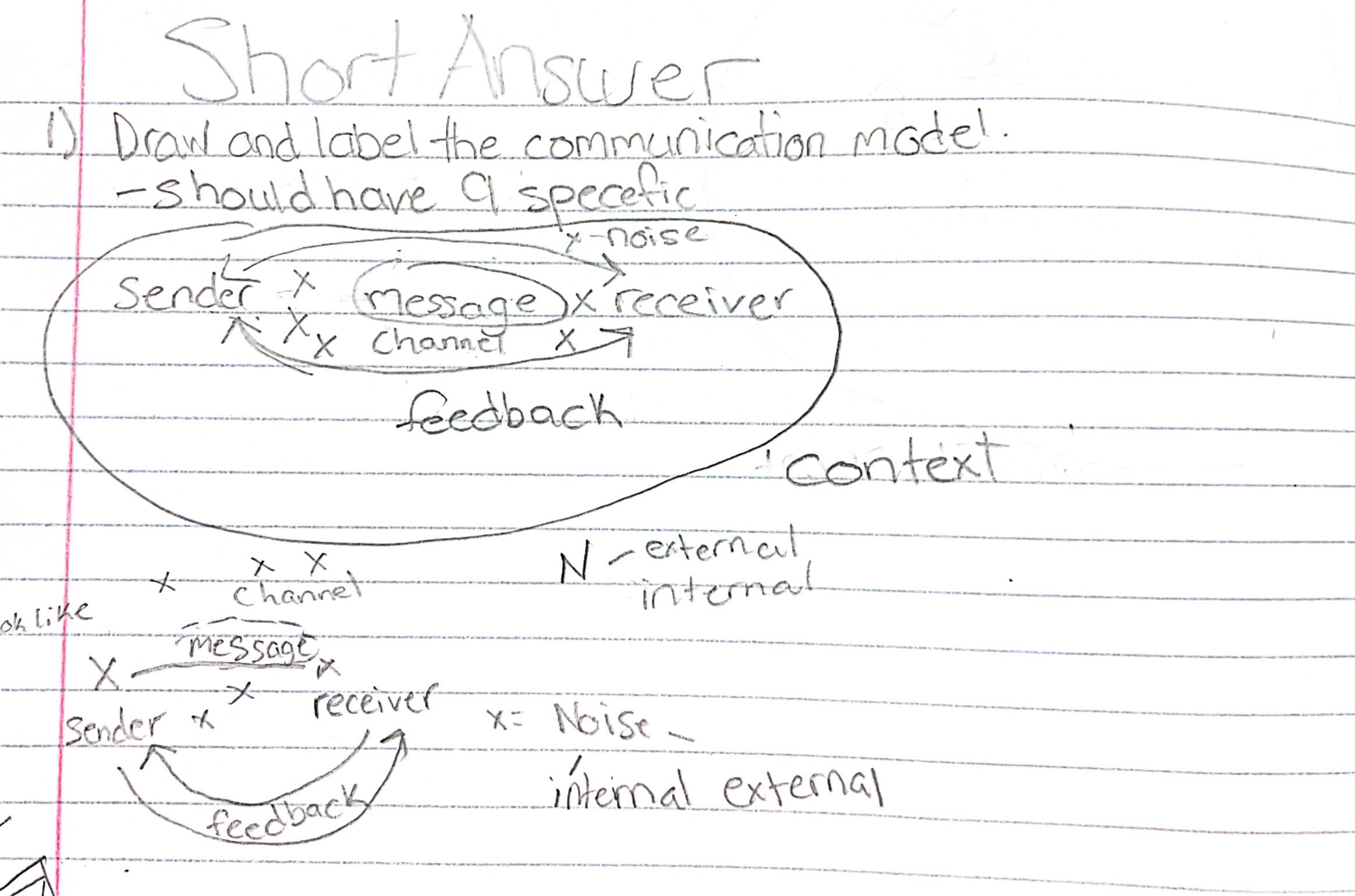Comm short answers
0.0(0)
0.0(0)
Card Sorting
1/9
Earn XP
Description and Tags
Study Analytics
Name | Mastery | Learn | Test | Matching | Spaced |
|---|
No study sessions yet.
10 Terms
1
New cards
communication model
sender, message(channel), receiver, feedback, context, noise (external and internal)

2
New cards
what are the 7 approaches to comm ethics
democratic, universal, (codes, procedures, standards), contextual, narrative, dialogue, standpoint
3
New cards
democratic comm ethics
idea of public communication, focus on collaboration, free speech
4
New cards
universal comm ethics
duty ethic to tell the truth, focuses on one way of doing things
5
New cards
codes, procedures, standards
guidelines that tell you what you are allowed to do and what you are not allowed to do.
6
New cards
contextual comm ethics
situation matters
7
New cards
narrative comm ethics
tradition, culture, having lived the experience
8
New cards
dialogue comm ethics
what emerges in conversation "between" people (feedback loop)
9
New cards
standpoint comm ethics
the notion of someone's demographics (age, race, gender
10
New cards
Communication model is important for understanding comm ethics
because it allows you to communicate the good (what you seek to protect and promote). It allows you to be informed about ethical issues and listen to all points of view by understanding that there is difference.